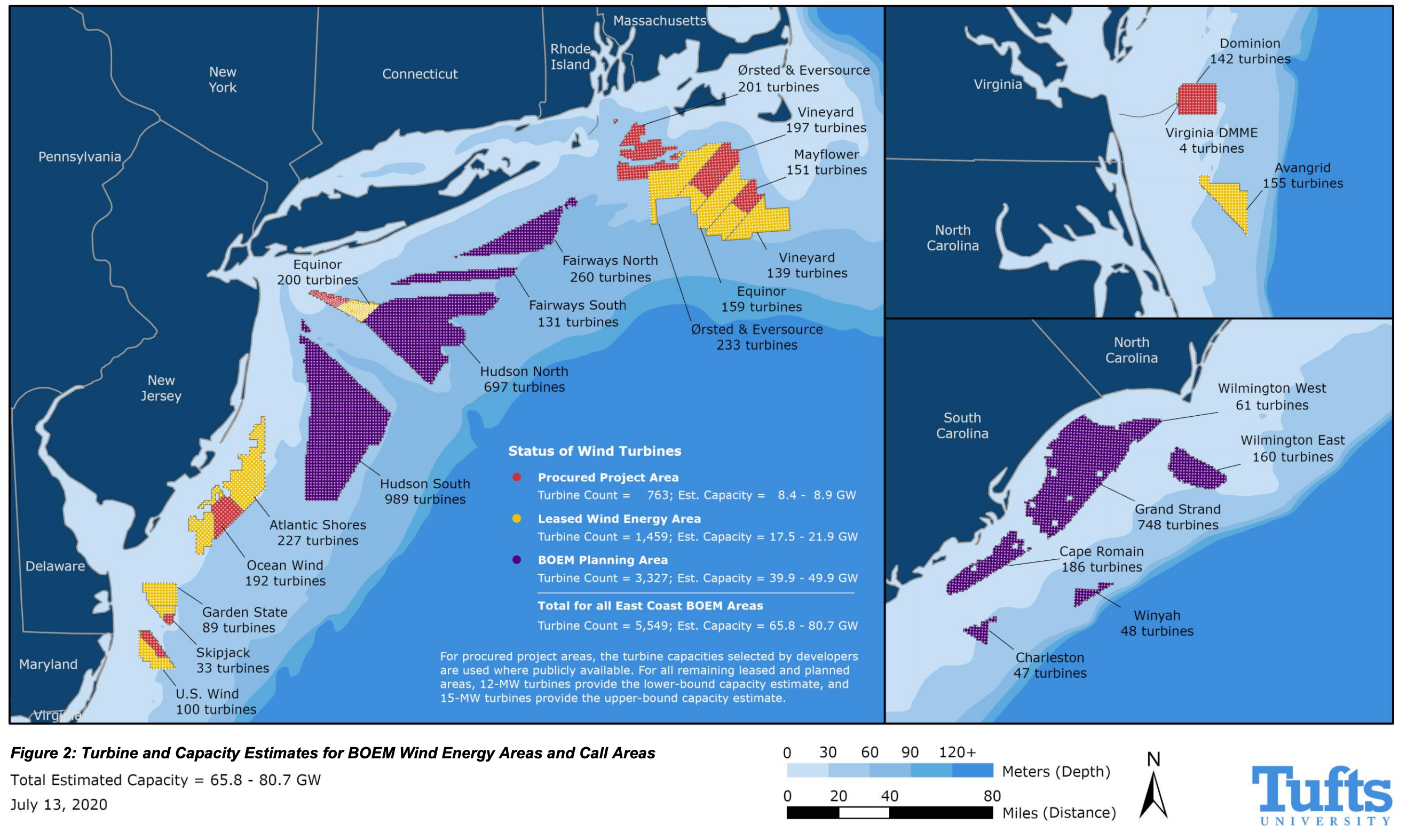Offshore wind is a generational energy and economic opportunity for America. As an abundant, homegrown source of energy that is located in close proximity to onshore population areas. Particularly for the urban areas of the Northeast United States and California, offshore wind provides a much needed energy alternative that can also deliver jobs and investment.
Overview of BOEM's Regulatory Framework
The Energy Policy Act of 2005 (EPAct) authorized BOEM to issue leases, easements and rights of way to allow for renewable energy development on the Outer Continental Shelf (OCS). EPAct provided a general framework for BOEM to follow when authorizing these renewable energy activities. For example, EPAct requires that BOEM coordinate with relevant Federal agencies and affected state and local governments, obtain fair return for leases and grants issued, and ensure that renewable energy development takes place in a safe and environmentally responsible manner.
In 2009, the Department of the Interior announced the finalization of regulations governing BOEM's OCS Renewable Energy Program. These regulations provide a detailed structure to govern how BOEM manages its Renewable Energy Program, ensure that BOEM meets its statutory obligations, and provide both certainty and flexibility for overseeing the nascent offshore renewable energy industry.
BOEM's renewable energy program occurs in four distinct phases: planning, leasing, site assessment, and construction and operations. BOEM engages key stakeholders throughout this process, as early communication with interested and potentially affected parties is critical to managing potential conflicts. BOEM's renewable energy regulations were updated in October 2011 to reflect the Bureau reorganization, and will be updated in the future to incorporate lessons learned and stakeholder feedback.

BOEM prepared a final Programmatic Environmental Impact Statement (PEIS) in support of establishing its program for authorizing renewable energy and alternate use activities on the OCS. The final PEIS examines the potential environmental effects of the program on the OCS and identifies policies and best management practices that may be adopted for the program. The Record of Decision for the PEIS can be found by clicking here.
On April 17, 2014, BOEM announced the publication of its Final Rule to extend timing requirements for submitting a Site Assessment Plan and a General Activities Plan pursuant to its renewable energy regulations. Click on the link below to access the Final Rule.
National and Regional Guidelines for Renewable Energy Activities
BOEM has developed a number of national and regional guidelines for renewable energy activities on the Outer Continental Shelf (OCS). These informal documents are intended to provide lessees, operators and developers with additional information or interpretation of a regulation, OCS standard or regional requirement, clarification for implementation of a special lease stipulation or regional requirement, or updated administrative information (e.g., telephone listings, office address).
In addition, the Northeast Ocean Plan and Mid-Atlantic Regional Ocean Action Plan (the Plans) describe a series of collaborative actions and best practices related to the use of data, inter-jurisdictional coordination, and stakeholder engagement that will inform and guide Federal, State, Tribal, and Northeast and Mid-Atlantic Fishery Management Council activities under existing authorities. The Plans promote healthy ocean ecosystems and sustainable ocean uses. Consistent and within existing statutory authorities, BOEM will use the Plans to inform and guide its actions and decisions in the Northeast and Mid-Atlantic areas.
Map of Current Atlantic OCS Leases
 Additional Content
Additional Content
BOEM Outer Continental Shelf Renewable Energy Leases Map Book
BOEM Wind Energy Commercial Leasing Process Fact Sheet
BOEM State Activities Webpage

